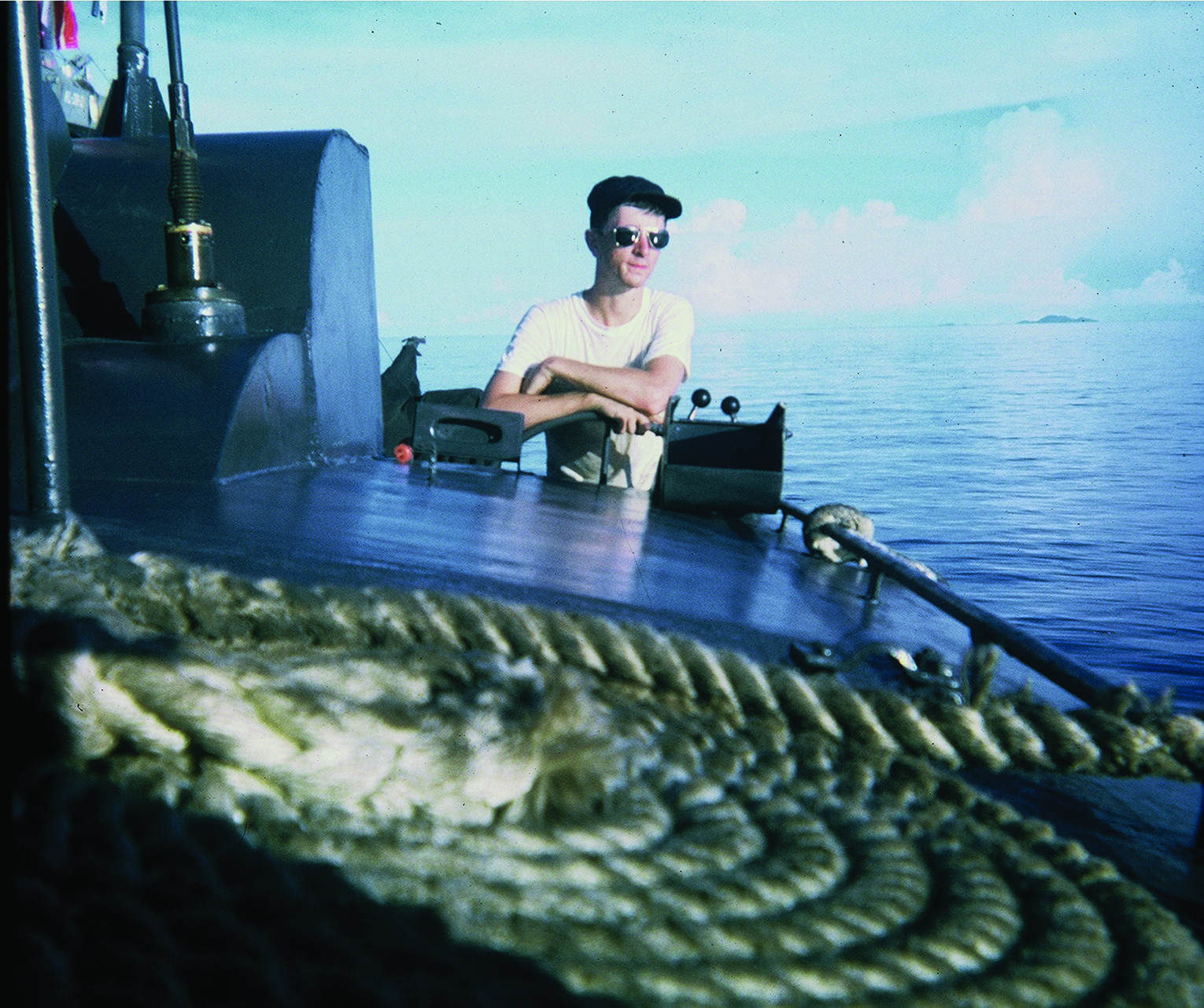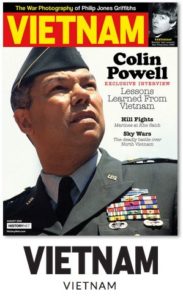I enlisted in the Navy on Feb. 5, 1968, three days after my 19th birthday. Shortly before completing basic training at Great Lakes Naval Training Center near Chicago, I received my first set of orders and was about to become a crew member on USS Krishna, a landing craft repair ship. It was then in dry dock at the base in Yokosuka, Japan. I had long been interested in the Land of the Rising Sun, so my four-year military commitment was off to a great start. When renovations on the Krishna were complete, we got underway at a less-than-blistering 9 knots—about 11 mph. On Sept. 24, we dropped anchors in An Thoi, a South Vietnamese fishing village on the southern tip of Phu Quoc Island in the Gulf of Thailand. That was the first day of what would become one of the most interesting and memorable chapters of my life—maintaining and repairing vessels designated “patrol craft fast,” or PCF, better known as swift boats.
About 3½ years before my deployment, Gen. William Westmoreland, the top U.S. commander in South Vietnam, requested shallow watercraft to support a newly formed surveillance force charged with stopping the flow of enemy troops and supplies into South Vietnam via waterways. At that time, the Viet Cong had easy access to rivers, canals and the coastline for smuggling and infiltration operations.
The Navy tested a variety of boats for the program before selecting one built by Louisiana-based manufacturer Sewart Seacraft Inc. Beginning in 1965, swift boat missions focused on coastal (blue water) patrols in Operation Market Time. The focus shifted in 1968 from coastal to riverine/canal (brown water) operations. A crew of six—one officer and five enlisted—manned the swift boats. The swift boats maintained a 24/7 schedule and interacted daily with local fishing vessels, most of which were operated by legitimate fishermen. Swift boat crews engaged in goodwill gestures, such as giving cigarettes and candy to South Vietnamese whose boats were inspected for contraband.
The crucial task of keeping swift boats operational was the job of the sailors aboard the Krishna. Each of us took pride in our work. We had a wide variety of backgrounds, but the men in our crew were a close-knit group. As an electrician’s mate apprentice, I am confident the $83 I got twice a month was well earned.
One component of a swift boat electrical system had two 24-volt battery banks. They served as the primary source for engine starting, navigation lights, radar and general-purpose lighting. Portside batteries provided standby power. The wiring configuration enabled both battery banks to function in parallel to maintain essential electrical systems.
The battery banks were in the aft section of the “engine room.” That’s a relative term. To access, service and replace a battery you had to navigate over and around two 480 horsepower Detroit Marine Diesels. As a retired aerospace engineer, I am certain that when swift boats were designed the engineers never considered that the electricians working on them were not former football players. Fortunately, I had played a lot of baseball and was fit. That helped.
Supplies were occasionally problematic. I still remember a swift boat returning from patrol. Several of the battery posts were worn down. There were a few empty .50-caliber machine guns shells on deck, which I saw as the answer to the battery post problem. I hacksawed off a shell casing’s rim and primer cap. I put what was left of the hollow shell cylinder on a grinding mill to thin it out and then tapped it over the degraded battery post, where the empty cylinder served as a mold that I filled with solder. When the solder cooled and hardened, I peeled the shell off and now had a reconstructed, functioning battery post. The captain saw that, laughed and said, “Well, that’s one way to do it.”
The Krishna had a port and starboard duty rotation. Every other day, a sailor would stand a four- or five hour watch. On Dec. 20, 1968, I had the midwatch, midnight to 4 a.m., at the bow. I had an M16 rifle and a box of concussion hand grenades. We threw grenades into the water periodically to prevent Viet Cong from planting explosives on the boat. I threw one that turned out to have a short fuse. The grenade detonated before it hit the water and generated the loudest sound I had heard until I sat in the second row during a Led Zeppelin concert. On May 10, 1969, I departed the Krishna and flew to Saigon. About a week later I was on my way home.
I used my experience as an electrician in the Navy to continue working in that trade after my four years of military service. As time passed, it occurred to me that getting a degree and working in spacecraft engineering would be an ideal career path. As a kid I was a space geek. I still remember sitting mesmerized in front of a black-and-white TV in 1961 watching Alan Shepard become the first American launched into space. I thought that was about as cool as anything could get. After Gus Grissom followed Shepard into space with another suborbital flight, John Glenn in 1962 became the first American to circle the Earth—three times. I thought that was an amazing accomplishment.
Decades later in March 1985, I was fortunate to land what was a dream-come-true job. I became senior facilities engineer in San Diego for General Dynamics Space Systems which built Atlas and Centaur satellite launch vehicles used by NASA, the National Oceanic and Atmospheric Administration, the military and businesses. I managed buildings totaling about 1 million square feet. I handled contracts involving a wide variety of things, including electrical distribution systems, asphalt and concrete projects, new roofing, painting, and even elevator maintenance. In my “spare time” I designed and managed one of the largest industrial recycling programs in California.
On my facilities list was an 80,000-square-foot building where Atlas and Centaur rockets were assembled in one of the world’s largest “clean rooms”—pristine workplaces designed to prevent contamination of sensitive equipment. I wrote an article on recycling clean room clothing (Tyvek) for an engineering magazine. The White House notified us in 1990 that Vice President Dan Quayle was interested in seeing our organization. A couple of days before he was on-site, three Secret Service agents visited. We had a few golf carts to get us around. One of these was a multi-passenger cart with a back seat, which I used when working with the Secret Service agents. I thought it was appropriate that we called that cart “The Limo.” We gave Quayle a tour of the clean room. I believe he enjoyed it.
Although I’ve been retired for years, I still find space news interesting. My wife Cathy and I participated in a NASA program enabling space fans to have their names etched on a microchip placed aboard the Mars rover Perseverance, scheduled for launch on
July 17, 2020. Our souvenir “boarding passes” have 313,586,649 frequent flyer miles, and that’s just for a one-way flight!
I have told people for years that everything I needed to know about the spacecraft business—keeping the facility running at optimum efficiency, having a Plan B to instantly respond to unexpected events, and getting the rocket delivered on time for launch—I learned repairing and maintaining swift boats during the Vietnam War. Both processes require teamwork and an equal commitment by all. As in swift boat operations, failure is not an option in the spacecraft industry.
As I reflect on the swift boat and spacecraft chapters in my life, the similarities between the two have always interested me. However, it should be noted there is one significant difference. The chow on the Krishna didn’t come close to what is available in San Diego. I remember telling the captain when we were in An Thoi that I believed our food was unconstitutional. Knowing my sense of humor is at least slightly off kilter, he asked, “How?” I replied, “It’s cruel and unusual nourishment.” He corrected me and said, “That’s cruel and unusual punishment.” Saluting him, I replied, “Yes, sir.” V
Tom Edwards is a freelance writer/photographer in Forest Lake, Minnesota.
This article appeared in the August 2020 issue of Vietnam magazine. For more stories from Vietnam magazine, subscribe here:
Do you have reflections on the war you would like to share? Email your idea or article to: Vietnam@historynet.com, subject line: Reflections.






